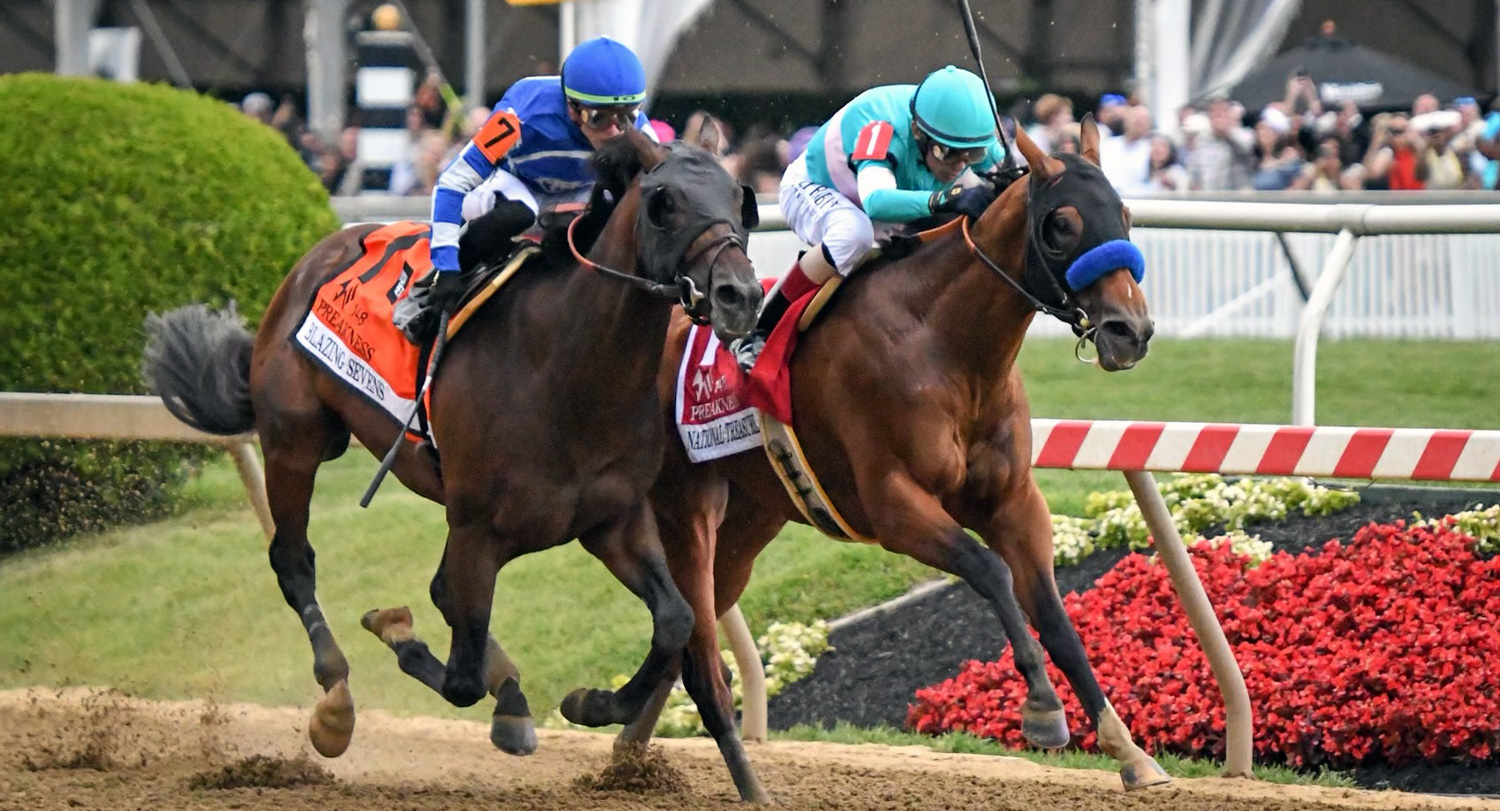
The next time you watch a horse race, note the accents in the voices, read the names — not just the jockeys and grooms, but the trainers and owners. Chances are most of the people you see excelling in horse racing are Latino.
“Over 80% of the people on the track throughout the second half of the 20th and into the 21st century are Latino,” says University of South Carolina history professor Gabrielle Kuenzli. “It's noticed by many people, but somehow people still think that thoroughbred flat racing is a white, rich man's sport, which is wild to me.”
One of the biggest issues is mainstream U.S. media’s inability or unwillingness to adapt to people who are more comfortable speaking Spanish, Portuguese or any language other than English, says Kuenzli, who grew up between Switzerland and Iowa City, Iowa, and lived in Latin America for five years, learning multiple languages at a young age.

“Part of what we're trying to do is feature Latinos as playing a prominent role in a Southern institution as more than labor, as tremendous professionals. What we're doing is writing Latino history in South Carolina.”
Her case in point: There was no official translator provided for 2023 Kentucky Derby winning trainer Gustavo Delgado’s news conference after the race and only a handful of reporters at the event spoke Spanish.
“So the reporters there talked to his son, Gustavo Delgado Jr., who is Delgado’s assistant trainer, because he speaks more English,” Kuenzli says. “The Kentucky Derby-winning trainer sat silent throughout much of the press conference instead of explaining his strategy and preparation with Mage, the winning horse.”
A bilingual journalist for Al Día en América asked Delgado in Spanish what the derby victory meant to him, and Delgado answered in Spanish that it was a victory for all Latinos in the industry who work every day to win races like the Derby.
“And he does this huge history of Latin Americans’ commitment to the world of horseracing, not as labor, but as Kentucky Derby winners,” Kuenzli says. “The next day in the newspapers, what came out? Something like Gustavo Delgado at a press conference apologized for his poor English. Not only did the reporters not speak Spanish, but they didn't bother to have someone translate it for them. That is unacceptable in this day and age.”
Kuenzli’s research after earning her Ph.D. in Latin American history had focused on Bolivia, where she went on a Fulbright Scholarship, and resulted in a book Acting Inca: National Belonging in Twentieth-Century Bolivia.
Her attention has been on Latin Americans in horse racing since 2015, when she says the sport caught her attention and “I started watching. I can't even tell you why, but I really believe racing holds you. It holds you in wild, wild ways, and you find a way to be involved.”
She noticed too that many of the top jockeys were Latino and simply wondered why.
“That was exactly my question,” she says. “Why in the world has no one worked on this?
“We have a history of Latin American participation in U.S. racing. And yet so many times when victories are discussed, they are narrated as a specific event, as a specific race, with a specific protagonist. The pattern of Latino victories on racetracks across the U.S. rarely put together as a noteworthy accomplishment by Latinos.”
She started with an ASPIRE grant from USC to spend time at a jockey school in Puerto Rico. The school is run by the island’s education department and is a two-year program that trains students on all aspects of horsemanship from mucking stalls to riding or training potential Kentucky Derby winners.
“That’s why we get so many talented jockeys from Latin America,” she says. “They’re sending us trained professionals, not people who are naturally small of stature and who have nothing to lose.”
Her new book, which is under contract with University of Kentucky Press and that she will finish this year, focuses on Canonero II, the Venezuelan-trained horse that won the first two legs of the Triple Crown in 1971.
“I am using that lightning rod moment to talk about the roots of horseracing in Latin America,” she says.
In addition to the scholarly work, Kuenzli also writes for several turf and track publications, which gets her access to key players in the world of horseracing.

Jockey Johnny Velazquez from Puerto Rico sits aboard National Treasure, winner of the 2023 Preakness Stakes at Pimlico Racetrack in Maryland. Photo by Silvio Gonzales
Part of her research has found its way to South Carolina’s Aiken Thoroughbred Racing Hall of Fame & Museum, where museum coordinator Lisa Hall, Kuenzli and USC media arts graduate student Silvio Gonzales have worked on exhibits featuring Gonzales’ photography and videography skills. Gonzales’ racetrack photography will be featured at the museum, beginning Oct. 22.
Kuenzli is also working with undergraduate student Sophia Riley on a project for the Center for Digital Humanities.
“I try to pull USC students into this in interesting ways,” Kuenzli says.
For Gonzales, the work is doubly rewarding because Kuenzli is his mother.
“I was actually not the biggest fan of horseracing in the beginning,” Gonzales says. “It was my mother's passion. She loves horseracing.”
Gonzales was raised between Bolivia and Columbia, living “within 15 minutes of the USC campus,” he says. He started as an undergraduate in exercise science but switched to media arts when the pandemic caused everyone to go remote during his second freshman semester.
“I realized I couldn’t do chemistry and biology online, so I found something else,” he says. “And media arts was something that just spoke to me.”
Being bilingual helps when he and his mother are interviewing and photographing jockeys, trainers and owners in the field and he shares his mother’s passion for telling the stories of Latinos in the horseracing industry.
“I would love to continue working on thoroughbred photography and horse photography in general, but my overall aim through media arts is to change or contribute to a change in perspective of Latinos in media,” he says. “Horseracing is probably the first industry where you see Latinos succeed at every level.
“Eight of the top 10 jockeys in the world right now are Hispanic. The owners are Hispanic, the trainers are Hispanic. The exercise riders are Hispanic. You see them in every level of success. And there's a history and a tradition of horseracing in Latin America.”
Kuenzli says the story of horseracing is integral to both Latin America and the U.S. South.
“One of the oldest traditions in the South is horse racing. One of the oldest traditions in Latin America is horse racing,” she says. “Part of what we're trying to do is feature Latinos as playing a prominent role in a Southern institution as more than labor, as tremendous professionals.
“What we're doing is writing Latino history in South Carolina.”
Banner image: National Treasure in the final stretch of the Preakness Stakes. Photo by Silvio Gonzales